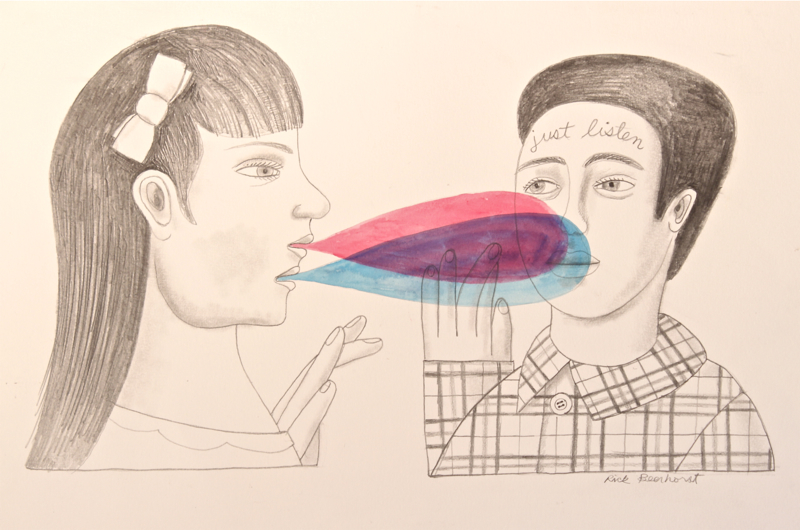
Anxiety disorders are considered the most prevalent mental health problem, with an estimated 25% of the population suffering from a type of anxiety disorder at least once in their lifetime (Craske et al., 2017). Moreover, not only are anxiety disorders significantly associated with large declines in psychosocial functioning and quality of life, they are also known to be of high burden to society. In 2010 alone, 69 million Europeans were diagnosed with an anxiety disorder, which resulted in a total of €74 billion spent (Gustavsson et al., 2011).
In past decades, there has been increasing evidence to suggest that cognitive behavioural therapy (CBT) is an effective treatment for anxiety and other related disorders (Hans & Hiller, 2013; Hofmann et al., 2012). CBT is a psychosocial intervention, grounded on scientific evidence, that seeks to help patients manage their problems by altering the dysfunctional way in which they think and behave. For anxiety-related disorders, this typically involves manipulating the patients’ maladaptive belief of the anticipated threat, both in terms of its likelihood and harmfulness (Hofmann, 2008; Smits et al., 2012).
To properly test the efficacy of a treatment like CBT, randomised controlled trials (RCTs) using a psychological or pill placebo comparison should be used, as they are considered the ‘gold-standard’ tool for assessment. Nonetheless, evidence for the efficacy of CBT as a treatment for anxiety disorders mainly comes from meta-analyses that have compared CBT to a range of control conditions, including wait-list control and treatment-as-usual. These conditions cannot be considered as robust as a placebo comparison; wait-list comparisons do not control for patient expectations whereas treatment-as-usual can be highly variable and inappropriately monitored.
Thus, the purpose of this study was to update the only meta-analysis ever published on randomised placebo-controlled trials of CBT for anxiety and related disorders (Hofmann & Smiths, 2008), by including data from RCTs published since 2008. This was a much-needed update, which sought to inform future debate on the treatment of anxiety as well as encourage researchers and policymakers to disseminate the benefits of CBT interventions.

This meta-analysis aimed to provide an updated analysis of the efficacy of CBT for anxiety and other related disorders.
Methods
Study authors used PubMed and PsycINFO to search for relevant studies published up until January 2017. To complement this search, the reference lists of recent meta-analyses and review articles were also examined. Studies were only included in the review if:
- Patients were aged between 18 and 65 years;
- Patients met diagnostic criteria for acute stress disorder, generalised anxiety disorder (GAD), obsessive compulsive disorder (OCD), panic disorder (PD), post-traumatic stress disorder (PTSD), or social anxiety disorder (SAD);
- Patients were randomly assigned to CBT or a pill/psychological[1] placebo condition*;
- The clinical severity of the disorder under consideration was assessed by means of validated measures; and
- Effect sizes (or data to calculate effect sizes) were provided.
Studies were excluded from the review if:
- They presented secondary analyses of a larger, more complete, or prior study;
- The placebo intervention included active treatment for the target disorder;
- The CBT intervention was deemed to be “third-wave”;
- The study sample shared a specific comorbidity (for e.g., substance abuse); or
- The intervention took place remotely (for e.g., online or over the phone).
In total the search protocol produced 3,215 original studies, but the majority (3,174 or 98.7%) were excluded as they did not meet the prespecified criteria. Once the 41 eligible studies had been selected, two independent raters reviewed the studies and extracted information on sample size, sample characteristics, CBT treatment type, placebo type, outcome measures, analysis strategy, and publication year. The quality of these studies was also assessed using the Cochrane Collaboration tool for assessing risk of bias, which considers whether treatment allocation was randomly generated, treatment assignment was concealed, and for example, whether missing data was appropriately dealt with.
[1] * A psychological placebo should control for nonspecific intervention factors such as the contact with a therapist, but cannot include treatment elements with demonstrated efficacy for the condition being considered.
Results
- The 41 RCTs included in the final analysis of this study represented a total of 2,843 patients randomly assigned to either CBT or a placebo condition:
- Findings revealed that overall, people randomised to CBT, as opposed to placebo, demonstrated significant improvements to target disorder symptoms (Hedges’ g = 0.56, p < 0.0001)
- CBT was also found to significantly improve anxiety symptoms, depression, and quality of life, although the effect sizes were reportedly smaller (Hedges’ g = 0.56, 0.38 and 0.31, respectively)
- Of the 41 studies included, only 24 collected follow-up data, but the pattern of results was similar to that obtained at post-treatment:
- At follow-up, individuals treated with CBT also showed improvements in:
- disorder specific symptoms (Hedges’ g = 0.47, p < 0.0001),
- anxiety symptoms (Hedges’ g = 0.42, p < 0.0001),
- depression (Hedges’ g = 0.29, p < 0.0001),
- and quality of life (Hedges’ g = 0.15, p < 0.05)
- At follow-up, individuals treated with CBT also showed improvements in:
- Interestingly, the greatest effect sizes were reported for OCD, GAD, and acute stress disorder (Hedges’ g = 0.87–1.13), with smaller effects identified for PTSD, SAD, and PD (Hedges’ g = 0.39–0.48).
- Effect sizes were not found to be moderated by sample characteristics (e.g., race, sex, sample size, and medication use) or study characteristics (e.g., number of CBT sessions, type of placebo, publication date, and risk of bias). However, results revealed that patients suffering from PTSD and/or SAD responded more effectively to individual CBT treatment, as opposed to group treatment (Hedges’ g: individual CBT = 0.54 vs. group CBT = 0.16).

Overall, people randomised to CBT demonstrated significant improvements to their target disorder symptoms, anxiety symptoms, depression, and overall quality of life.
Conclusions
This was a replication of a prior meta-analysis (Hofmann & Smits, 2008), aimed at updating the existing evidence on the efficacy of CBT for anxiety and related disorders. The study revealed that, since 2008, 16 randomised placebo-controlled trials of CBT for the treatment of anxiety related disorders have been published. Taken together with the evidence published prior to 2008, it was reported that patients randomised to CBT demonstrated significant improvements to their target symptoms, both at post-treatment and follow-up. In addition, CBT improved other nonspecific symptoms, such as patient anxiety, depression, and quality of life. Not only does this suggest that CBT results in an amelioration of symptoms immediately after treatment, but also that this is maintained several months after treatment has ended, and that it extends beyond symptoms specific to the disorder being treated.

When compared to a (psychological or pill) placebo condition, CBT was found to be efficacious for the treatment of anxiety and related disorders.
Strengths and limitations
This was an important study, as it both replicated and updated the only meta-analysis ever published on randomised placebo-controlled trials of CBT for anxiety-related disorders (Hofmann & Smiths, 2008). By seeking to include all relevant RCTs ever published, the study was able to ensure a large sample size of 2,843 patients, which allowed for interesting questions to be answered through moderation analyses.
Despite this, the majority of studies included in the final analysis did not comprise of very diverse samples; findings cannot be generalised to all populations, and instead, should serve as an encouragement for others to incorporate more heterogenous groups into future RCTs. In addition, this meta-analysis revealed that very few trials (16 of 41, or 39%) have used intent to treat analyses within their study designs, and that missing data is not always properly dealt with. Therefore, future studies should also endeavour to make use of intent to treat analyses and to process missing data in an appropriate manner.
Finally, although authors state that the present study included sufficient trials with follow-up data (24 of 41, or 59%), the mean follow-up period was of 5.6 months, which is not particularly long. More RCTs collecting follow-up measures of longer time periods are needed to properly ascertain the maintenance efficacy of CBT for anxiety-related disorders.
Implications for practice
This study provided a much-needed update of a prior meta-analysis; the results are also in line with the preceding study, as they suggest that CBT is an efficacious treatment for anxiety-related disorders. This is particularly true for OCD, GAD, and acute stress disorder. Nonetheless, future work is needed to establish more effective treatments for other related disorders, especially PTSD, SAD, and PD.

More effective treatments are needed for post-traumatic stress disorder (PTSD), social anxiety disorder (SAD) and panic disorder (PD).
Conflicts of interest
No conflicts to declare.
Links
Primary paper
Carpenter JK, Andrews LA, Witcraft SM. et al (2018). Cognitive behavioral therapy for anxiety and related disorders: A meta-analysis of randomized placebo-controlled trials. Depression and Anxiety, 35(6): 502 – 514.
Other references
Craske MG, Stein MB, Eley TC. et al (2017). Anxiety disorders. Nature Reviews Disorders Primers, 3: 17024. [PubMed abstract].
Gustavsson A, Svensson M, Jacobi F. et al (2011). Cost of disorders of the brain in Europe 2010. European Neuropsychopharmacology, 21: 718 – 779.
Hans E, & Hiller W. (2013). A meta-analysis of nonrandomized effectiveness studies on outpatient cognitive behavioral therapy for adult anxiety disorders. Clinical Psychology Review, 33, 954–964. [PubMed abstract].
Hofmann SG. (2008). Cognitive processes during fear acquisition and extinction in animals and humans: Implications for exposure therapy of anxiety disorders. Clinical Psychology Review, 28, 199–210.
Hofmann SG, Asnaani A, Vonk IJ, Sawyer AT & Fang A. (2012). The efficacy of cognitive behavioral therapy: A review of meta-analyses. Cognitive Therapy and Research, 36, 427–440.
Smits JA, Julian K, Rosenfield D & Powers MB. (2012). Threat reappraisal as a mediator of symptom change in cognitive-behavioral treatment of anxiety disorders: A systematic review. Journal of Consulting and Clinical Psychology, 80, 624–635.
Photo credits
- Photo by Richard Price on Unsplash
- Photo by Ronaldo Santos on Unsplash

[…] CBT for anxiety: new meta-analysis confirms significant improvements to target symptoms […]